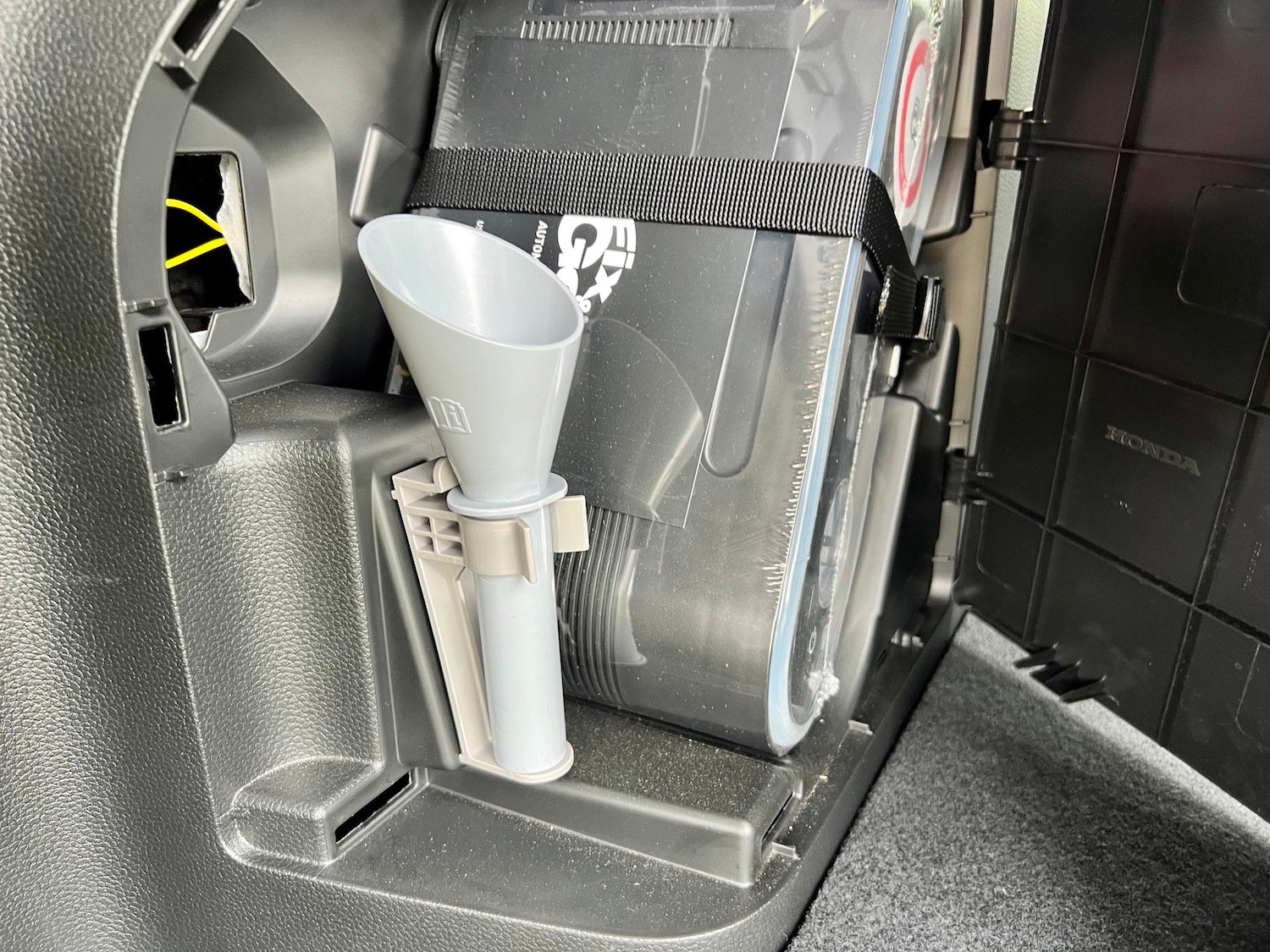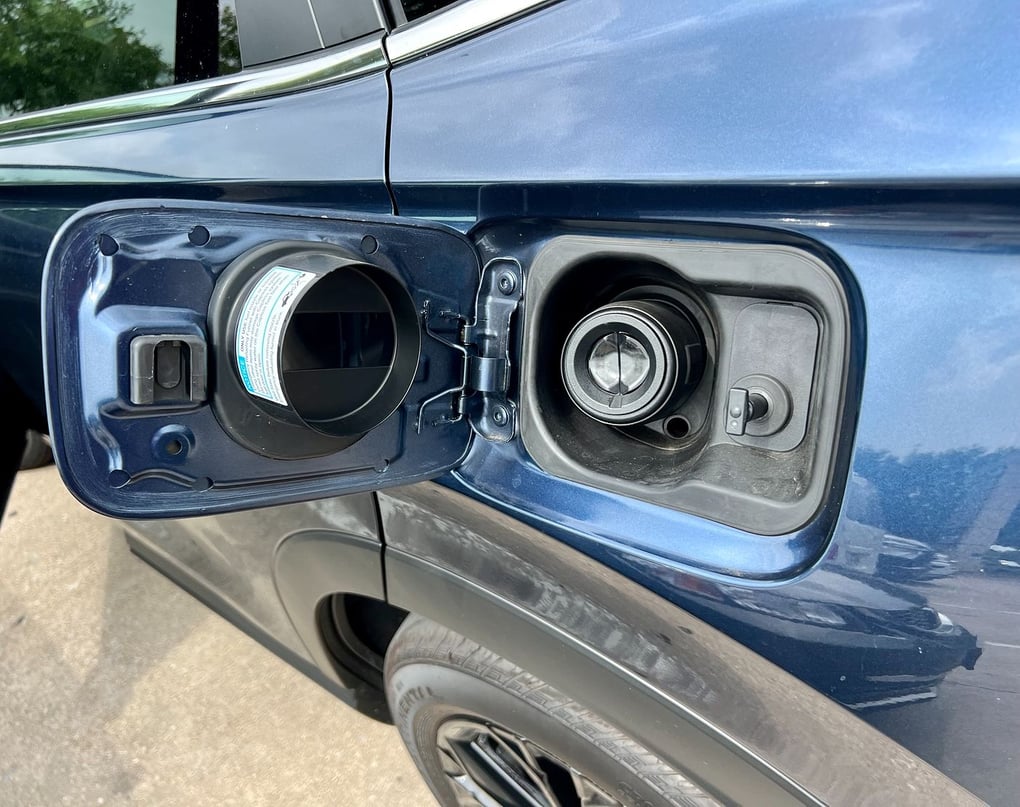More and more, as I review new vehicles, and they need fuel, I open the gas tank flap all set to unscrew the gas cap, but there is not one there. There is a small trap door, that you can’t push in with your finger, yet when you stick the gas nozzle from the pump in, it easily inserts. Welcome to capless gas tanks. Ford really pioneered capless fuel fillers on the 2009 Explorer, now many automakers use them.
WARNING
I have talked on the air about a lady who ran out of gas in her Chrysler 300 and tried to put fuel in her car with a gas can. It ran out on the ground because she did not use the plastic fuel filler funnel that came with the car.
Sadly, most salespeople forget to tell the customers about this essential part for adding gas or even additives. I’ve seen the parts in the glove box as well as in the trunk.
If you have a capless gas tank, read your owner’s manual and find that funnel in case you need it in a time of emergency. If you can’t find it, go to your dealer and request one. This is what one looks like in the new 2023 Honda CR-V, though they come in many colors and some are clear.
 Fuel funnel in the 2023 Honda CR-V Sport Touring Hybrid.
Fuel funnel in the 2023 Honda CR-V Sport Touring Hybrid.
Pros of Capless Gas Tanks
- Less chance for gas smell on your hands. You simply flip open the fuel door and stick the pump nozzle in. Not having a twist-on/off cap is one less contact with a gasoline-vapor odor source.
- No worries about paint scratching from the dangling gas cap, which manages never, ever to fit properly into whatever holder or restraint the automaker provides to keep it out of the way during fueling.
- No embarrassing cap-dangle that’s a result of driving off in a hurry and forgetting to put the cap back on.
- Minimal chance of bad guys siphoning out your $4 gas. Capless systems use various mechanisms in the fuel-filler neck that make it nearly impossible to stuff in a garden hose and drain a victim’s tank.
- No more discomfort for people with arthritis or other impairments that make the act of twisting a cap awkward or painful.
If you haven’t seen a capless filler, watch this Honda video:
Cons of Capless Gas Tanks
- While limiting the fuel smell that gets on your hands, capless systems can increase the gas smell coming from the vehicle. If you try to fill the tank even a little bit more after the gas station pump clicks off, you’re likely to get headache-level fuel fumes pouring from the area of the filler neck until you drive awhile. Don’t even consider over-filling the tank and driving right home to park in your garage.
- The same anti-siphon feature means you have to carry the (automaker-provided) special funnel for times you run dry and need to refuel from a gas can instead of a pump. Afterward, the funnel smells like gas and you can smell it even in the trunk.
- What if you need to siphon gas for an emergency? Like, say, you live where you might get the occasional 54-inch snow and can’t get to the gas station to buy fuel for your emergency home generator and really, truly wish you could drain some gas from your car or truck tank to use in the generator to keep the power on? Or, perhaps, you might like to help a stranded driver with a gallon or two but can’t, even if you happen to have a hose.
For me, I like not having to deal with the twist off gas cap, it speeds things up at the pump and I don’t have to worry about not getting it on tight, causing the check engine light to illuminate.
Photo: 2023 Honda CR-V Sport Touring Hybrid. Photo: CarPro.


.jpg?width=150&name=jerry-headshot.jpg%20(1).jpg)